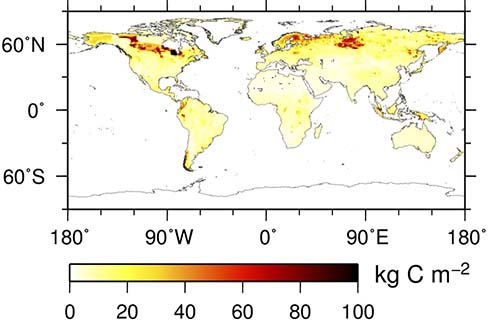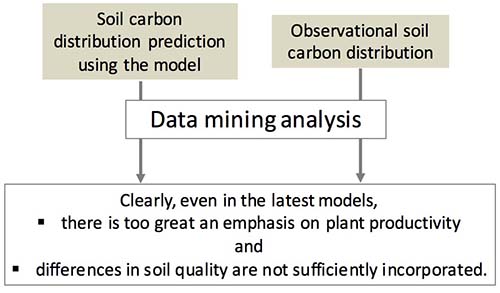Home > Research > Research Results > Research Results 2017 > Data mining techniques to improve the accuracy of predicting global soil carbon distribution
Update:July 21, 2017
Main content starts here.
Data mining techniques to improve the accuracy of predicting global soil carbon distribution
| Article title |
Data-mining analysis of the global distribution of soil carbon in observational databases and Earth system models |
|---|---|
| Author (affiliation) |
Shoji Hashimoto (a), Kazuki Nanko (b), Boris Ťupek (c), Aleksi Lehtonen (c) |
| Publication Journal |
Geoscientific Model Development, 10:1321-1337, March 2017, DOI:10.5194/gmd-10-1321-2017( External link ) |
| Content introduction |
A huge amount of carbon is accumulated in the soil covering the land areas of the Earth, and it is expected to pose considerable impacts on future climate change. Therefore, in order to evaluate the impact of soil carbon on climate change, it is essential to accurately predict the spatial distribution and fluctuations of soil carbon using a model that predicts the climate and carbon cycle in the Earth system; this is known as the Earth system model. However, it has been confirmed that even when using the most cutting-edge model adopted by the Intergovernmental Panel on Climate Change, the observed soil carbon distributions and predictions using the model significantly differ, and the cause of this needs to be elucidated. In this study, we analyzed the prediction of soil carbon distribution using the latest methods of data mining, including the Earth system model and observational soil carbon database. Although the predictions for both did not match, one cause for the discrepancies between these two predictions was found to be the excessive incorporation of plant productivity and the lack of adequate consideration of soil quality differences (i.e., quantity of nitrogen and clay) in the Earth system model, as compared to the observational soil carbon distribution predictions. We believe that improving these points in the Earth system model will allow for greater accuracy in predicting soil carbon conditions across the Earth. Note: Earth system model: Model used for expressing climate by incorporating the carbon cycle on land, atmosphere, and ocean and predicting climate change. Note: Data mining technique: Method of analysis applied to large quantities of data for discovering relationships and patterns hidden within the data.
Figure1. Example of global soil carbon distribution based on observational data. (Harmonized World Soil Database)
Figure2. Schematic of this study. |
Copyright © Forest Research and Management Organization. All rights reserved.


